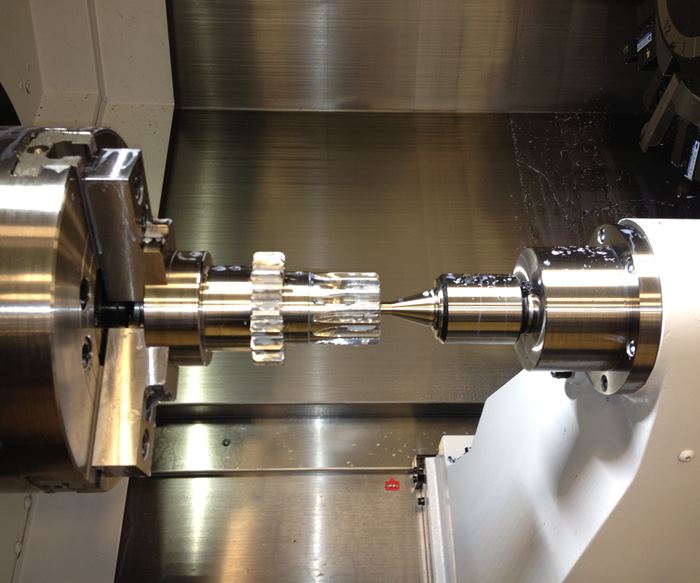In the world of metalworking and machining, accuracy and stability are non-negotiable. One of the essential tools that ensures both, particularly in turning operations, is the revolving center. Also known as a live center, this critical lathe accessory plays a vital role in supporting long or heavy workpieces during high-speed rotation. Whether you’re working in a large industrial machine shop or a small-scale workshop, understanding how revolving centers function—and why they matter—can significantly improve the quality and safety of your machining process.
What Is a Revolving Center?
A revolving center is a type of lathe center mounted in the tailstock of a lathe machine. Unlike a dead center, which remains stationary and requires lubrication to reduce friction, a revolving center contains bearings that allow the tip to rotate along with the workpiece. This reduces friction, heat generation, and wear on both the center and the workpiece.
The main components of a revolving center include:
- Point or tip – The part that contacts and supports the workpiece
- Bearing assembly – Allows the tip to spin freely with the rotating material
- Shank – Inserts into the tailstock of the lathe
- Body – Encloses the internal bearings and provides structural stability
Why Use a Revolving Center?
Revolving centers provide a range of benefits that are essential in precision turning operations:
1. Reduced Friction and Heat
By rotating with the workpiece, revolving centers reduce friction between the workpiece and the center tip. This is especially useful in high-speed machining or when working with heat-sensitive materials.
2. Extended Tool and Workpiece Life
Lower friction means less wear on both the lathe center and the workpiece. This helps prevent damage, extends the life of the tool, and reduces the need for frequent replacements.
3. Improved Workpiece Support
A revolving center supports the free end of a long or slender workpiece, minimizing deflection, chatter, and vibration during turning. This leads to higher precision and smoother finishes.
4. Higher Speed Capabilities
Because the center rotates, it’s capable of handling higher spindle speeds than a dead center, making it ideal for modern CNC lathe machines and high-production environments.
Applications of Revolving Centers
Revolving centers are commonly used in various machining operations, including:
- Turning and facing on a lathe
- Center drilling and boring
- Thread cutting
- Precision grinding
- Woodturning (in woodworking lathes)
They are indispensable in operations that involve:
- Long shafts or rods
- Heavy or unbalanced workpieces
- High-speed rotation
- Deep or extended turning
Types of Revolving Centers
Revolving centers come in a variety of styles to suit specific applications:
1. Standard Point Revolving Center
This is the most commonly used type, ideal for general turning operations. It features a sharp conical tip for precise centering.
2. Heavy-Duty Revolving Center
Built for high-load or industrial applications, this center is designed with reinforced bearings and larger shanks to support heavier workpieces.
3. Interchangeable Tip Revolving Center
Offers versatility with removable tips for different operations—such as bull nose, extended point, or pipe center attachments.
4. Bull Nose Revolving Center
With a broad, rounded tip, this center is used for hollow workpieces like tubing or pipe.
5. Pipe Center
Specifically designed to support the inside diameter of pipes or tubes without damaging the material.
Selecting the Right Revolving Center
Choosing the right revolving center depends on a few key factors:
- Workpiece size and weight – Heavier work requires centers with higher load ratings.
- Speed of operation – Higher speeds demand high-precision bearings and heat-resistant materials.
- Material of workpiece – Some materials, like aluminum or plastics, may require softer or specially coated centers to avoid marking.
- Tailstock size – The shank of the revolving center must match the taper size of your tailstock (e.g., Morse Taper MT2, MT3, etc.).
Maintenance and Care
To ensure the longevity and performance of your revolving center:
- Keep it clean – Regularly wipe down the center to remove chips, dust, and coolant.
- Lubricate bearings – Some models require periodic lubrication. Always follow manufacturer recommendations.
- Inspect for wear – Check the tip and bearings for signs of wear or damage.
- Store properly – When not in use, store the center in a clean, dry environment to avoid rust and contamination.
Advantages Over Dead Centers
While dead centers still have their place in certain applications (especially in slow-speed, high-pressure cutting), revolving centers offer significant advantages in most modern machining setups:
| Feature | Dead Center | Revolving Center |
|---|---|---|
| Friction | High | Low |
| Heat generation | High | Low |
| Speed limit | Low | High |
| Maintenance | Frequent lubrication | Minimal (sealed bearings) |
| Applications | Low-speed, heavy cuts | High-speed, precision turning |
Conclusion
Revolving centers are a critical tool for any machinist aiming for accuracy, efficiency, and safety in lathe operations. Their ability to reduce friction, support complex workpieces, and enable high-speed precision makes them indispensable in today’s manufacturing and fabrication industries.
Whether you’re machining long shafts, delicate parts, or heavy components, investing in a high-quality revolving center will improve your results, extend the life of your tools, and streamline your production process. Make sure to select the right type for your needs and keep it well-maintained for years of reliable performance.
